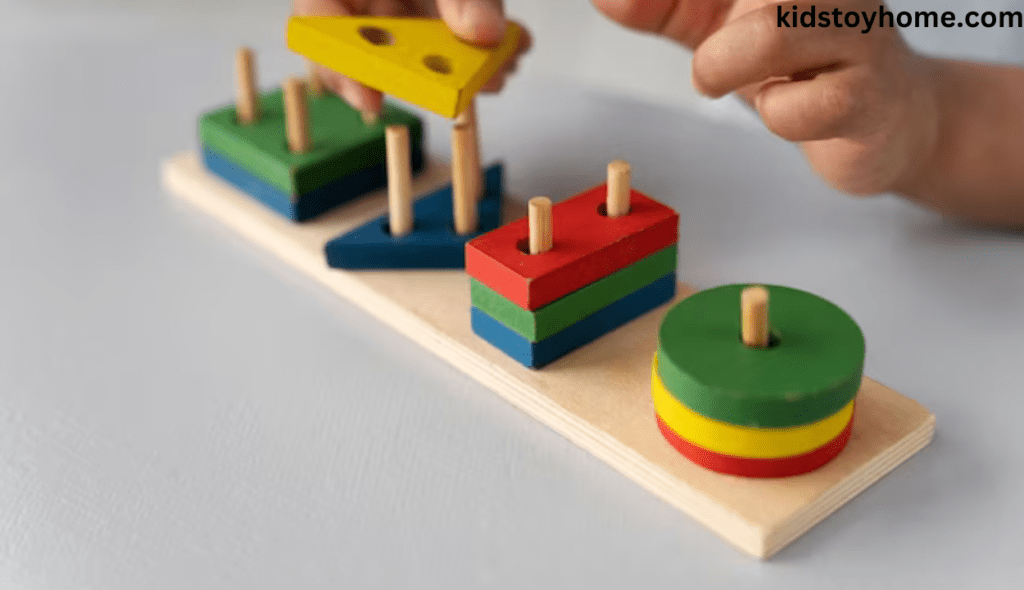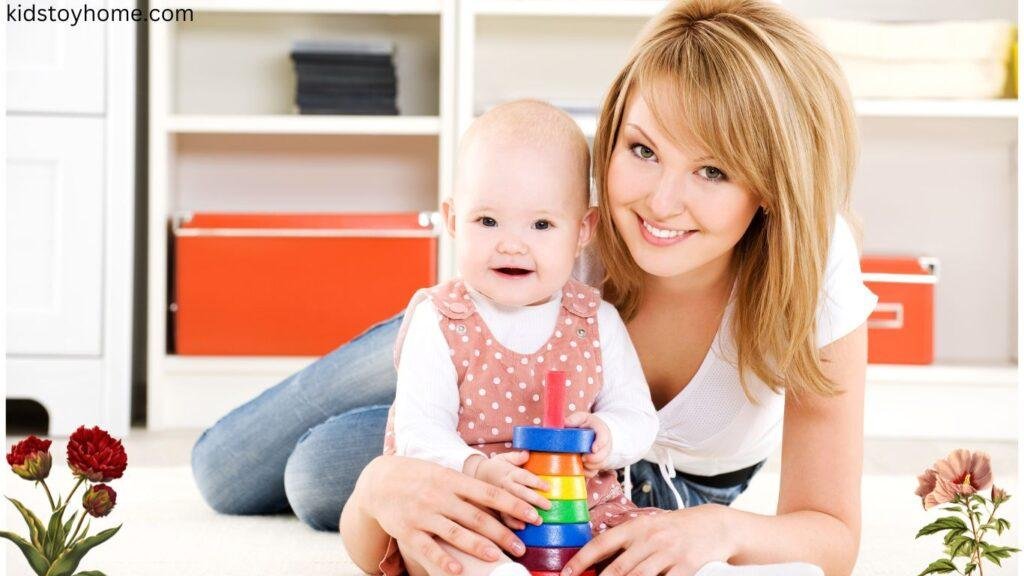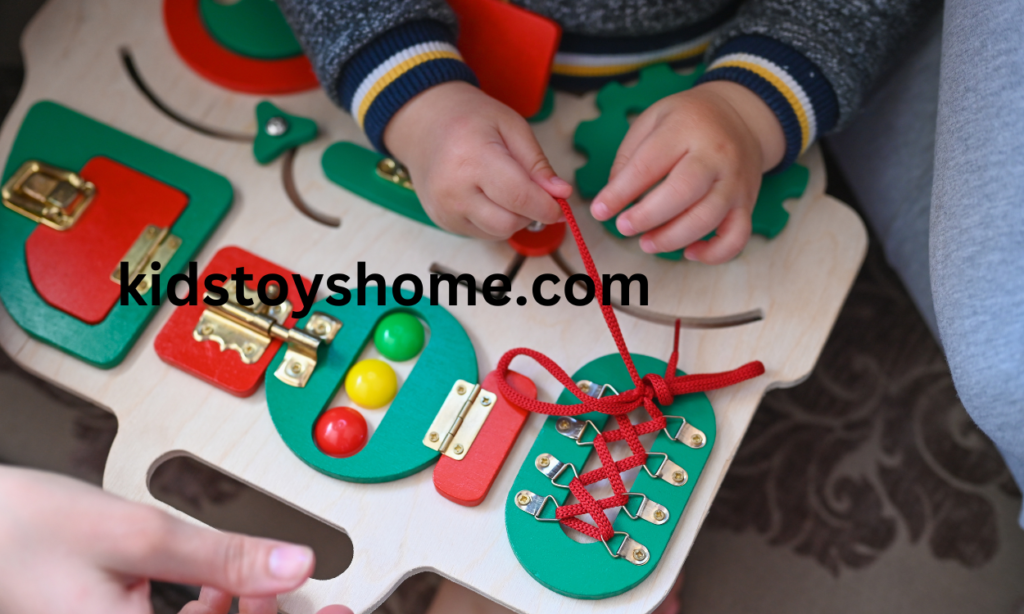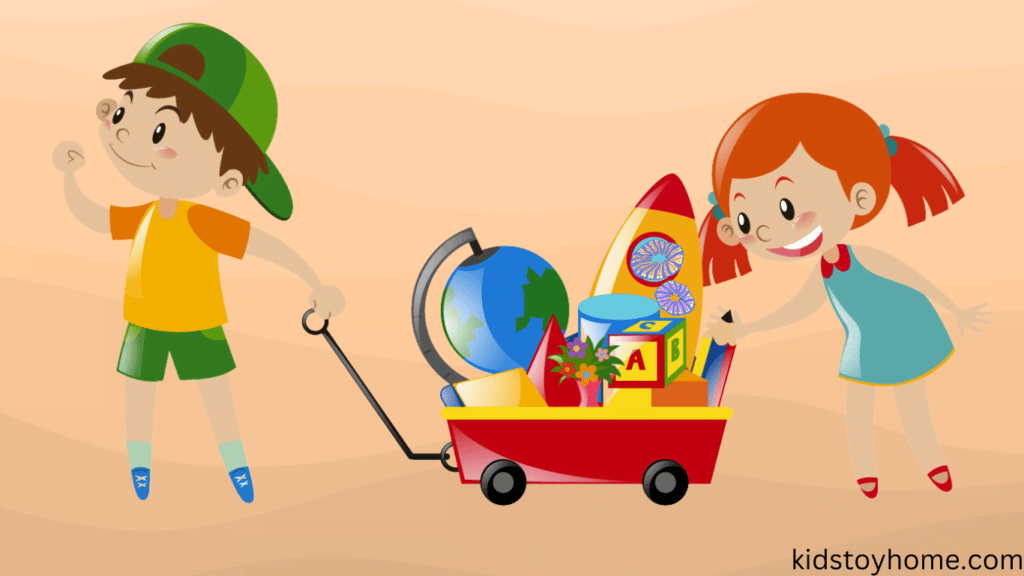
In today’s world, is Lining up Toys a Sign of Intelligence? Intrigued parents, educators, and psychologists alike. Is there a correlation between this meticulous arrangement and an intelligent child?
The act of lining up toys, from trains to dolls and blocks, raises questions about cognitive development, problem-solving skills, and organizational skills in children. This article delves into the possible link between this behavior and signs of intelligence in kids, aiming to provide insights into this fascinating aspect of childhood development.
Lining up toys is a common behavior among children during playtime. Parents and caretakers often wonder about the significance of this repetitive behavior. While it may appear to be a simple and innocuous act, the underlying reasons and potential implications for a child’s cognitive ability spark curiosity and concern.
Understanding this behavior’s underlying reasons and potential implications could provide valuable insights into a child’s cognitive development.
Exploring this aspect can offer parents, educators, and caregivers a deeper understanding of a child’s evolving thought processes and cognitive skills, potentially aiding in their overall intellectual growth and cognitive growth.
To fully comprehend the connection between lining up toys and intelligence, this article will explore the various aspects of child development, delve into expert opinions, examine scientific research, and offer practical insights that shed light on this intriguing behavior and its implications on a child’s cognitive abilities.
Understanding Intelligence

Prior to a deeper discussion, it’s fundamental to grasp the concept of intelligence. Intelligence embodies diverse theories and definitions, but broadly, it signifies an individual’s capacity to learn, comprehend, and employ knowledge in various scenarios.
Importantly, intelligence transcends mere academic or cognitive prowess. It encompasses social and emotional intelligence, playing a pivotal role in our daily interactions and relationships.
These dimensions of intelligence are equally significant as they influence how we navigate and relate to the world around us, impacting our personal and social spheres. Understanding intelligence in this comprehensive light broadens the scope of its impact on our lives beyond traditional academic measures.
Is Lining Up Toys Normal?
Regarding children and their behavior, it is common for parents to question whether specific actions or preferences are considered normal. One such example is lining up toys. Many children enjoy creating organized lines or groups with their toys, especially at a young age. So, is this behavior considered normal?
The short answer is yes! Lining up toys is a typical and developmentally appropriate behavior for children. It is a way for them to practice their organizational skills, sorting abilities, and even mathematical concepts like counting and patterns.
Lining up toys can also be seen as a form of imaginative play. Children may create stories or scenarios with their lined-up toys, bringing them to life in their little world. This type of play helps foster creativity and problem-solving skills.
Is Lining Up Toys a Sign of Intelligence in Children?
The act of toy packing has sparked numerous discussions among experts regarding its potential impact on children’s intelligence scores. Varied opinions highlight the need to consider different perspectives on this matter.
Higher Learning Skills and Organizational Skills
Some professionals argue that a sequence of toys can foster higher learning and organizational skills in children. This behavior shows a child’s capacity to sort, categorize, and visually represent objects, all essential aspects of intelligence. Moreover, it helps us see children’s creativity and imagination.
Spatial Skills
Some studies suggest that arranging objects in space, such as lining up toys, can be indicative of spatial intelligence. Spatial skills are linked to various aspects of cognitive development, including mathematics and problem-solving.
Routine and Environmental Influences
Other experts challenge the notion that arranging toys necessarily indicates higher intelligence. They propose that this behavior might be linked more to a child’s inclination towards routine or might be heavily influenced by their supportive environment.
In such cases, the act of toy sequencing may not necessarily signify superior cognitive ability but could be considered a normal facet of a child’s development.
Limited Comprehensive Research
It’s essential to acknowledge the limited comprehensive research on this subject. Existing studies often concentrate on specific issues, such as signs of autism spectrum disorders, and don’t provide a holistic understanding of the significance of toy sequencing as an indicator of intelligent children.
Need for More Research
Therefore, caution is warranted in approaching this issue, recognizing the necessity for more research to gain a deeper understanding of its relevance.
Understanding Toy Lining in Toddlers
Normal Developmental Behavior
Lining up toys is an everyday activity among toddlers, often starting around age 2 and peaking by age 4 or 5. This behavior typically reflects their developing organizational skills and an interest in order, mimicking adult behaviors they observe. It’s a form of play that helps them understand spatial concepts and improve focus.
Not Necessarily a Sign of Autism
While some parents worry that lining up toys might indicate autism, this behavior alone is not a reliable indicator. Autism involves a range of other signs, such as difficulties with social interactions, repetitive behaviors, and resistance to change.
If concerns about autism arise, it’s essential to look for a combination of behaviors and consult a pediatrician.
Cognitive Development Insights
The act of lining up toys can provide insights into a child’s cognitive abilities. It may indicate skills in pattern recognition and categorization, which are essential for mental development. Encouraging this behavior can support their problem-solving skills and spatial awareness.
Jean Piaget, a pioneering psychologist, proposed that during the preoperational stage (ages 2 to 7), children engage in symbolic play and begin to represent objects with words and images. Lining up toys can be seen as part of this symbolic play, indicating cognitive growth.
Managing Tantrums Related to Order
If a child becomes upset when their arrangement is disrupted, it’s usually a regular part of their development. Establishing rules and teaching self-soothing techniques can help them manage their emotions better. If tantrums persist or are accompanied by other concerning behaviors, seeking advice from a healthcare professional is recommended.
What does it mean when a child lines up their toys?
When a child arranges their toys in a row, it can signify various meanings and implications. This behavior is often viewed as an indicator of developmental progress and language skills.
One possible explanation for a child’s inclination to line up toys is the creative expression of spatial awareness. By organizing toys in a particular order, the child demonstrates their ability to comprehend and interact with their surroundings. This behavior also reflects a sense of structure and sequencing.
The act of toy arrangement might serve as an emotional outlet. Toy arrangements can establish a sense of control and stability in their lives. They offer a source of comfort and familiarity, particularly during stressful or changing times. This can be a coping mechanism that provides a feeling of security.
Skills developed during alignment of toys
Following skills developed in the children during the alignment of toys:
| Skills | Elaboration |
| Fine Motor Skills | Precise movements of fingers and hands to manipulate and align small objects like toys. |
| Hand-Eye Coordination | Coordination between hands and eyes to accurately perceive the position of objects and control their movement. |
| Spatial Awareness | Understanding of the spatial relationships between objects, enabling precise alignment and arrangement. |
| Spatial Awareness | Understanding of the spatial relationships between objects, enabling precise alignment and arrangement. |
| Problem-Solving | Ability to identify issues with alignment and develop strategies to overcome them, promoting effective toy arrangement. |
| Concentration | Focus and attention are given to the task at hand, maintaining concentration to ensure accurate alignment of toys. |
| Patience | Persistence and tolerance for repetition allow for the meticulous alignment of toys without frustration. |
| Creativity | Exploration of different arrangements and patterns, fostering creative expression through toy alignment. |
The Link Between Lining up Toys and Intelligence
Research suggests that there may be a connection between lining up toys and intelligence, specifically in the area of spatial skills.

Spatial skills refer to our ability to understand and manipulate objects in our stimulating environment. This includes tasks such as mental rotation, visual-spatial memory, and spatial visualization.
When children line up toys or group them by certain characteristics, they are using their spatial skills to organize and categorize objects. This type of activity also requires planning,problem-solving, and the ability to follow a sequence – all important components of intelligence.
Possible Reasons Children Line Up Their Toys
Children line up their toys for a variety of reasons, reflecting their own experiences and developmental needs.
One possible reason is scheduling requirements. Sequencing toys enable children to develop a sense of order and structure in their environment. This single behavior in children helps them understand spatial relationships and sequences and develops their cognitive skills.
Another reason children queue for toys is to deal with anxiety or frustration. Through structured planning, they gain comfort and a sense of control over their surroundings. A set of toys creates a predictable and familiar routine, reduces stress, and can create a sense of security.
The set of toys allows for creativity and imagination to be inspired. Children often use this activity as a means of creating stories and activities, engaging in pretend play that enhances their language and communication skills.
Motor skills learning is another potential source of toy stacking. This behavior requires precision and cooperation and allows children to optimize their motor skills and improve their hand-eye coordination by carefully packing each toy.
Ways To Improve Children’s Intellectual Abilities
While lining up toys may not be a cause for concern, there are ways to encourage and improve your child’s intellectual abilities. This can include puzzle-solving, storytelling, and even playing educational games.
Puzzles are a great way to challenge your child’s problem-solving skills and spatial awareness. Start with simple puzzles and gradually increase the difficulty level as they master each. Storytelling is another excellent way to boost creativity and critical thinking skills. Please encourage your child to come up with their own stories or ask them to retell a favorite book or movie.
Educational games, whether physical board games or interactive apps, can also help improve your child’s intellectual abilities. Look for games that focus on topics such as math, language, or science. Remember that these activities should be fun and engaging for your child – the learning aspect will naturally follow.
Toys That Measure Intelligence
Blocks and Building Sets:
Building blocks and construction toys are interactive playthings explicitly crafted for children to assemble and design diverse structures. These toys usually consist of interlocking blocks, bricks, or 4-6 pieces that kids can interconnect, stack, or piece of paper together to create an array of shapes, buildings, or imaginative configurations.
- The #1 Junior Construction Toy in the U.S.A. Features 80 blocks in 10 shapes and 9 vibrant colors
- Build Them Up Big Building Bag is designed for little hands and growing minds
- Creative Learning Play Toddlers can build anything they imagine and learn colors
Beyond mere entertainment, these toys serve as developmental tools, fostering a range of skills like fine motor development, spatial awareness, critical thinking, problem-solving, literacy skills, and refining hand-eye coordination.
They encompass a broad spectrum of options, including LEGO sets, wooden blocks, Mega Bloks, and various other construction-based toys. These playthings actively encourage children to engage in building, designing, and exploring their creativity through hands-on and tactile play.
By experimenting with these toys, kids not only enhance their motor skills but also unleash their imagination, learning the principles of structure and design in an enjoyable and explorative manner.
Board Games and Card Games:
Board games and card games are recreational activities involving specific gaming components that offer diverse experiences for players.
Board games commonly feature a playing board as a central element, coupled with game pieces, cards, dice, or tokens. Players navigate pieces around the board, following particular rules or guidelines to fulfill various objectives. These games show strategy, luck, and decision-making, adhering to a set of predefined rules.
Conversely, card games rely on a deck of cards as the primary gameplay tool. These cards showcase distinct designs, numbers, suits, or symbols and are manipulated according to specific game rules.
Card games span various genres, from strategic and competitive ones like Poker and Bridge to lighter, family-oriented games such as UNO or Go Fish.
Within these games, elements of chance, strategy, and social interaction among players form integral aspects, contributing to enjoyable and engaging gameplay experiences.
- WHAT ARE THE CHANGES: The Uzzle 3.0 Family Board Games for Adults now comes with IMPROVED QUALITY, bigger blocks, 100 Un…
- SUPER FUN AND EASY TO LEARN: The Uzzle is loved by over 150,000 customers worldwide. The game can be learned in under 1 …
- FAST-PACED AND ACTION-PACKED: Play individually or with up to 4 players. You can play with unlimited players if you get …
- UNO is the classic family card game that’s easy to learn and so much fun to play!
- In a race to deplete your hand, match one of your cards with the current card shown on top of the deck by either color o…
- Strategize to defeat your competition with special action cards like Skips, Reverses, Draw Twos and color-changing Wild …
Musical Instruments and Art Supplies
Musical instruments and art supplies serve as mediums for expressing creativity in diverse artistic forms.
In the realm of musical instruments, there’s a broad spectrum encompassing strings, winds, percussions, and keyboards. These instruments empower individuals to craft melodies, harmonies, and rhythms, allowing for musical expression and live performances.
From the graceful melodies of a violin to the powerful beats of drums or the vibrant notes of a trumpet, the world of musical instruments is expansive and rich.
On the other hand, art supplies comprise a multitude of materials essential for creative pursuits. These materials span paints, brushes, canvases, pencils, and various mediums for sculpting and sketching. They provide a platform for individuals to explore visual art, spanning from vibrant paintings and intricate drawings to expressive sculptures, enabling a diverse range of artistic expression.
Both musical instruments and art supplies serve as gateways for unlocking creativity, allowing individuals to delve into their artistic abilities and passions. They become essential tools for self-expression, enabling a canvas where imagination flourishes and creativity knows no bounds.
Fathers can encourage children’s intelligence when they are out of home. See also: to Encourage Physical Activity and Fun.
- ♥【22Pcs Toddler Musical Instruments】:LOOIKOOS kids musical instruments including 1*Xylophone,1*Harmonica ,1*Triangle wit…
- ★【Early Education Montessori Toys】:The toddler educational instruments are devoted to help kids in moving, grooving, and…
- ☀【Parent-child Relationship Enhancement】:LOOIKOOS musical toys fill your home with the sound of family fun! It builds in…
Is The Behavior of Lining Up Toys Exclusive to Children with Higher Intelligence?
Although the act of lining up toys can be considered a marker of early intelligence, it’s crucial to emphasize that this behavior isn’t unique to children with higher intelligence levels. It’s a typical activity among young children and can be observed in kids with different cognitive capacities.
As highlighted earlier, each child progresses at their individual pace and showcases intelligence in diverse ways. Hence, it’s essential for parents not to gauge their child’s intelligence solely based on this behavior. Intelligence in children is multifaceted and shouldn’t be confined to a singular activity like lining up toys.
Parents Who Ignore Signs of Autism Spectrum Disorder
While lining up toys is a normal behavior for most children, it can also be an early sign of autism spectrum disorder (ASD). Children with ASD may line up their toys in a specific order or have difficulty playing with them in any other way.
While not universally true, lining up toys is a behavior that can sometimes be associated with ASD. Understanding the nuances of this behavior in the context of autism can provide insights into the relationship between intelligence and toy organization. Reference: American Psychiatric Association.
They may also focus intensely on one toy or object rather than engaging in imaginative play.
Suppose you are a parent concerned about your child’s lining up behavior.
In that case, it is essential to look for other signs of ASD, such as delayed speech or difficulty with social interactions. It is always best to consult with a paediatrician if you have concerns about your child’s development.

In most cases, however, lining up toys is normal and harmless. So let your child explore and play in their way, and enjoy watching them grow and learn through their lined-up toys. After all, it’s another way for them to express their unique personalities! Just watch for any other red flags that may indicate a deeper issue.
So don’t worry if your child enjoys lining up their toys – embrace it as a regular part of their development and encourage imaginative play.
Every child is different and will have quirky behaviors – that make them unique! As long as they are happy, healthy, and continuing to grow and learn, there’s no need for concern about lining up toys. Let your child explore and discover the world in whatever brings them joy.
Observational Studies
Numerous anecdotal and observational studies exist that document children’s play behaviors, including lining up toys, and their cognitive development. These studies can provide real-world examples to support the idea that such behaviors are linked to intelligence.
Conclusion
In conclusion, lining up toys can be seen as a positive sign of a child’s developing intelligence, specifically in the area of spatial skills.
It requires planning, problem-solving, and an understanding of order and sequence – all important components of intelligence.
However, it is not the only indicator of intelligence, and children express their cognitive abilities in various ways.
FAQs for “Is Lining up Toys a Sign of Intelligence”?
Why does my daughter line up her toys?
Children tend to line up their toys for developmental and personal preference reasons:
- Organization preference: Children are comfortable with organizing things in an organized way.
- A Feeling of Order: Creating the alphabet creates a sense of control and predictability.
- Exploratory behavior: This can be a way for children to understand spatial relationships and patterns.
- Creative Play: The toys used can be imaginative or pretend play.
Why won’t my toddler play with toys?
There are many reasons why a child does not engage with toys:
- Excessive motivation: Too many options can overwhelm and discourage play.
- Developmental Level: Children prefer to explore their environment or socialize over solo games.
- Concentration: Low concentration or short attention spans can affect consistent play.
- Change in priorities: Their interests may have changed, this time to accommodate other activities.
Is it normal for a child to line up toys?
Yes, queuing toys is common among children and is considered a common behavior. Many children participate in this fun activity as part of their play and exploration. It can be a way to understand patterns, organize objects, or appreciate the visual and spatial aspects of wireless organizers.
However, if this typical behavior becomes obsessive, significantly interferes with daily routines, or persists for a long time, it may be beneficial to discuss it with a pediatrician or child development specialist.
Do autistic toddlers play with toys?
Autistic toddlers may have various ways of interacting with toys. While some may show interest in playing with toys, others might engage differently due to their unique preferences and sensory experiences. Some children might be interested in certain toys or play repetitively with particular objects.
What are some developmental reasons that a child may not engage with a toy?
A child may not engage with a toy due to various developmental reasons, such as sensory sensitivities, where the toy’s texture, sound, or color may be overwhelming. A child might still need to gain the motor skills required to manipulate the toy effectively, leading to frustration and disinterest. Cognitive developmental stages also play a role; a toy that is too advanced or too simplistic for a child’s current stage may fail to capture their interest.
How does the Fat Brain Toys SpinAgain encourage kids to practice lining up toys?
The Fat Brain Toys SpinAgain requires children to play with lining up toys by stacking color discs in sequence, improving hand-eye coordination through engaging play.
Disclaimer: This blog should not be used as a substitute for professional medical or developmental advice. Please consult a doctor or specialist if you have any concerns about your child’s development.










Thanks for breaking this down so clearly! Much appreciated.
Some genuinely great content on this site, thank you for contribution.